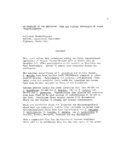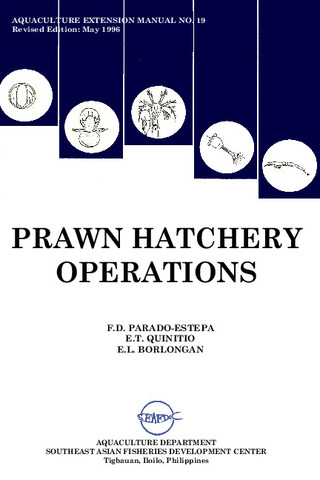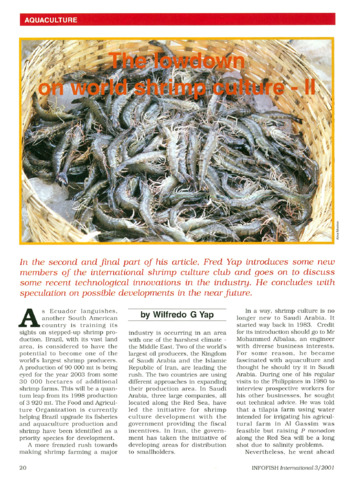Ovarian maturation stages of the wild giant tiger prawn, Penaeus monodon Fabricius
| dc.contributor.author | Tan-Fermin, Josefa D. | |
| dc.contributor.author | Pudadera, Rosario A. | |
| dc.date.accessioned | 2012-11-08T05:56:09Z | |
| dc.date.available | 2012-11-08T05:56:09Z | |
| dc.date.issued | 1989 | |
| dc.identifier.citation | Tan-Fermin, J. D., & Pudadera, R. A. (1989). Ovarian maturation stages of the wild giant tiger prawn, Penaeus monodon Fabricius. Aquaculture, 77(2–3), 229–242. | en |
| dc.identifier.issn | 0044-8486 | |
| dc.identifier.uri | http://hdl.handle.net/10862/1224 | |
| dc.description | SEAFDEC Aquaculture Department Contribution No. 233. | en |
| dc.description.abstract | A qualitative and quantitative study of the ovarian maturation stages of wild-caught Penaeus monodon was conducted to refine the existing method of staging. For industrial purpose, measuring the ovarian width at the first abdominal region can minimize arbitrariness in staging. A width of 20 mm indicates readiness for spawning while reproductive performance is improved when ovarian width is 30 mm or more. Based on histology, the usual 6 to 8 stages of development can be reduced to four stages: previtellogenic, vitellogenic, cortical rod, and spent. The previtellogenic stage (P) is characterized by the predominance of oogonia and primary oocytes in the chromatin nucleolus and/or perinucleolus stage. The vitellogenic stage (V) is marked by the presence of yolky oocytes. The cortical rod stage (C) is distinguished by the appearance of yolky oocytes with spherical or rod-like bodies at the peripheral cytoplasm. The spent stage (S) can be distinguished by the presence of few oocytes with yolky substance and/or cortical rods, thicker layers of follicle cells, and few darkly-stained, irregularly shaped primary oocytes. Individuals classified as stages II+ and III+ showed similarity in size and shape of all lobes in the posterior thoracic region, and histologically, corresponded to the revised stages V and C, respectively. Histochemical staining shows that glycoproteins and lipids are absent in the primary oocytes and present in yolky oocytes. Glycoproteins but not lipids occur in the cortical rods. Analysis of variance showed significant differences in mean gonad weight and gonadosomatic index values but not in the mean body length and body weight values in stages P to C. Uniformity in the number, stage and composition of oocytes in the four regions of the ovary at each stage showed that stage of ovarian maturity in wildprawns can be represented by any region of the ovary. Differences in the oocyte size frequency and mean values of average and maximum oocyte diameter in the four stages showed that these are good indicators of stage of maturation in wild P. monodon. | en |
| dc.language.iso | en | en |
| dc.publisher | Elsevier | en |
| dc.subject | Penaeus monodon | en |
| dc.title | Ovarian maturation stages of the wild giant tiger prawn, Penaeus monodon Fabricius | en |
| dc.type | Article | en |
| dc.identifier.doi | 10.1016/0044-8486(89)90205-6 | |
| dc.citation.volume | 77 | |
| dc.citation.issue | 2-3 | |
| dc.citation.spage | 229 | |
| dc.citation.epage | 242 | |
| dc.citation.journalTitle | Aquaculture | en |
| dc.subject.asfa | eggs | en |
| dc.subject.asfa | ovaries | en |
| dc.subject.asfa | histology | en |
| dc.subject.scientificName | Penaeus monodon | en |
このアイテムのファイル
| ファイル | サイズ | フォーマット | 閲覧 |
|---|---|---|---|
|
このアイテムに関連するファイルは存在しません。 |
|||
このアイテムは次のコレクションに所属しています
-
Journal Articles [1258]
These papers were contributed by Department staff to various national and international journals.




